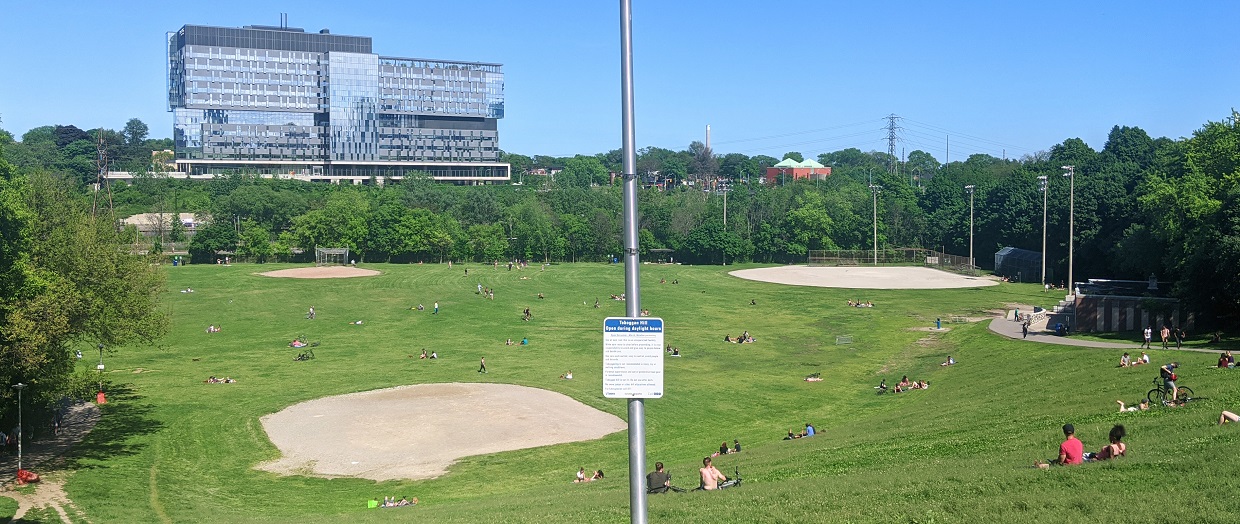Years of neglect have put our parks at risk, and it’s costing us dearly
After two months of physical distancing and staying at home, Ontarians are excited about the prospect of being able to get back outdoors into our parks, trails, and open spaces.
The provincial lockdown has given us a renewed appreciation for the value of greenspace — but as we prepare to get outside, we need to ask ourselves: are parks ready for us?

Parks and trails are places we go to exercise, to have fun, and relieve stress. But they are also more than that: parks are critical infrastructure that provide numerous benefits and services, including stormwater management, pollution reduction, climate change resilience, and the preservation of biodiversity.
All of these services are in addition to the valuable role parks play in supporting physical and mental health.
The contribution to mental health that time in greenspace provides is particularly important now, with the COVID-19 pandemic creating unprecedented stress and anxiety for many people. Spending time in nature is proven to reduce stress and anxiety, and has also been shown to reduce activity in the neural area of the brain linked to mental illness, compared to the same walk through an urban environment.
These benefits are magnified in larger, more natural parks that allow for immersion in nature and a feeling of solitude.
We can’t take these benefits for granted. As parks grow more crowded, the services provided and benefits to visitors decline. The trade-offs that come with the popularity of our greenspaces are garbage, dirty washrooms, crowded parking lots, and wear and tear on the parks themselves.
Now, there’s an added challenge created by the need for physical distancing. How do we ensure that all park-goers stay safe? How do we ensure that those who maintain our parks stay safe?

Something else to consider is the location and quality of parks. Many large parks are outside of our cites, and getting there is a day trip.
With social distancing requirements limiting access to public transit and services like Parkbus, not everyone will be able to safely get to larger, more natural parks. The quality and availability of smaller, urban parks varies significantly. Don’t we all deserve the same access to nature?
With virtually no investment over the years in these larger rural parks (including near-urban provincial parks and conservation areas), park managers can’t keep up with the population growth and demands created by popular attractions like escarpment views and waterfalls.
Every long weekend, parks go into crisis mode trying to keep up with demand. With physical distancing requirements further limiting park capacity, who will manage crowds? Who will decide who gets to visit our parks and who doesn’t?

If Ontario does not plan for expanding existing parks or establishing more parks on a regional scale, we will not be able to keep pace with the demands of our growing population.
 A recent study on the State of Large Parks in the Ontario’s Golden Horseshoe found that we would need 15,000 hectares of new large parkland by 2041 to maintain the current level of parkland per person. That’s the equivalent of adding 94 High Parks!
A recent study on the State of Large Parks in the Ontario’s Golden Horseshoe found that we would need 15,000 hectares of new large parkland by 2041 to maintain the current level of parkland per person. That’s the equivalent of adding 94 High Parks!
Parks are economic engines, creating jobs (from planners and engineers to landscapers and maintenance staff) and driving tourism in many communities.
The Green Infrastructure Ontario Coalition recently commissioned an economic impact assessment of the green infrastructure sector in Ontario, including the parks sub-sector. It found that the parks sub-sector provided an estimated 8,920 direct jobs in 2018 and a direct contribution to provincial GDP of $511 million. The green infrastructure sector as a whole was responsible for nearly 122,000 jobs and $8.33 billion in GDP in 2018.
As we plan for long-term recovery from the economic crisis created by the pandemic, we need to think about dedicated investment in green infrastructure such as parks. This investment would create jobs while also easing pressures on our over-burdened parks, and on all of us — a win-win-win!
We need to make sure that parks are there for us when we need them.
